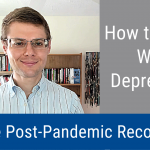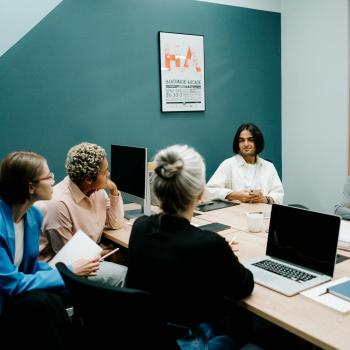
What do employees want in returning to the office after the pandemic?
Survey Says…
To address the false consensus effect, we need to turn to objective data that doesn’t rely on our gut feelings, intuitions, and assumptions. A good way to do so is to conduct a meta-analysis of several in-depth, independent, and large-scale research surveys of employees on post-pandemic remote work and returning to the office published recently. A Harvard Business School study on remote workers found that:- 27% hope to work remotely full-time
- 61% would like to work 2-3 days a week from home
- Only 18% want to go back to the office full-time
- 52% would like to work from home permanently full-time if herd immunity to COVID is never achieved
- 34% would still like to work from home full-time and permanently even if herd immunity was achieved
- 35% would accept a reduction in salary to work from home permanently
- 42% say if their current company does not continue to offer remote work options long term, they will look for another job
- 68% perceive a hybrid model of significant remote and in-person work as the ideal model
- 87% would prefer to work remotely at least some of the time
- 80% report they adapted well to full-time remote work
- 76% of employees consider benefits when evaluating whether to stay in a job, and they list remote work, flexible schedules, and mobility opportunities as the top three benefits
- 34% want resources to help set up a home office, and 33% want resources to subsidize other remote work expenses
- 35% report working more hours and 54% report taking less time off
- 50% are not concerned about their career growth
- 43% of remote workers say that they would be nervous about their job security if they worked remotely full-time, while others returned to the work site
- 26% plan to look for a job with a different employer after the pandemic, and of these, 34% want to find a job where they can work remotely and 80% are concerned about their career growth
- 48% feel more pressure to be online all the time while working remotely
- 39% find it difficult to socialize with co-workers
- Remote worker connection to company culture improved from 36% in May 2020 to 47% in March 2021, showing that working remotely may actually boost company culture
- 42% of workers who plan to leave their current employer would grade their employer’s efforts to maintain culture during the pandemic as a “C” or lower compared to 30% of all workers
- 46% would look for a different job if their current employer doesn’t offer some remote work after the pandemic
- 54% would be willing to stay in their job if not offered some remote work after the pandemic, but be less willing to go the extra mile
- 80% expect to work from home at least three times per week after the pandemic
- 81% think their employer will support working from home after the pandemic
- 74% would be less likely to leave their employer if offered remote work, and 71% would be more likely to recommend their company to a friend
- 75% of people are the same or more productive during COVID-19 while working from home
- On average, remote employees worked an extra 26 hours each month during COVID (nearly an extra day every week)
- 80% believe there should be one day a week with no meetings at all
- 23% of full-time employees would take a pay cut of over 10% in order to work from home at least some of the time
- 57% weren’t concerned that working remotely would impact their career progression
- 77% feel that after COVID, being able to work from home would make them happier
- 72% agreed that the ability to work remotely would make them less stressed
- 77% report that working remotely would make them better able to manage work-life balance
- No more than 25% of companies pay or share the cost of home office equipment
- 32% report that training in remote work would make them more effective
- 62% of respondents saw interruptions/being talked over as their top telework challenge
- 57% of respondents said that the audio quality of video conferencing is a challenge, and 56% said the video quality is a challenge
- 58% said they would “absolutely” look for a new job if they cannot continue remote work
- 31% said they aren’t sure what they would do
- and only 11% said that working remotely is not a big deal
- 46% feel concerned that returning to the office means less flexibility
- 43% believe it will bring less work-life balance
- 84% rank not having a commute as the most important benefit of telework
- 55% believe their productivity has increased while working remotely, 33% said their productivity has remained the same, 6% think their productivity has decreased, and 6% aren’t sure
- 35% see overworking as their biggest challenge with remote work, 28% list dealing with technology problems, 26% report challenges with reliable WiFi, and 24% indicate Zoom fatigue
- 56% experienced burnout
- 47% of employees say they would likely leave their job if it didn’t offer a hybrid work model once the pandemic ends
- 41% say they would be willing to take a job with a lower salary if their company offered a hybrid work model
- Asked about the top benefit of hybrid work, 38% cite the top benefit of hybrid work as less time and money spent commuting, 34% say work/life balance, and 21% list improved work performance
- 73% of employees want flexible remote work options to be permanent
- 66% of leaders are planning to remodel their company spaces for hybrid work
- 67% of employees want at least some in-person collaboration after the pandemic
- 54% of employees felt overworked, 39% felt exhausted, and about 20% believe their company doesn’t care about work/life balance
- 46% of those currently working remotely are planning to move to a new location in 2021 because they can now work remotely
- Remote job postings on LinkedIn increased more than five times during the pandemic, and women were 15% more likely to apply to such positions than in-person ones
- Comparing collaboration trends in Microsoft 365 between February 2020 and February 2021:
- Time spent in Microsoft Teams meetings has more than doubled (2.5X) globally
- Average meeting is 10 minutes longer
- Average Microsoft Teams user is sending 45% more chats per week and 42% more chats per person after hours
- Despite meeting and chat overload, 50 percent of people respond to Teams chats within five minutes or less, a response time that has not changed year-over-year
- Number of emails delivered to commercial and education customers in February, when compared to the same month last year, is up by 40.6 billion
- 66% increase in the number of people working on documents.
- This barrage of communications is unstructured and mostly unplanned, with 62% percent of calls and meetings unscheduled or conducted ad hoc
- LinkedIn data indicates nearly a doubling of job-switching intent in 2021
What Does Other Research Say?
Other research backs up this information. For example, consider a thorough survey comparing productivity of in-person vs. remote workers during the first six months of stay-at-home orders, March through August 2020, to the same March through August period in 2019. Employees showed a more than 5% increase in productivity over this period. Another study surveying 800 employers reported that 94% found that remote workers showed higher or equal productivity than before the pandemic. Non-survey research similarly shows significant productivity gains for remote workers during the pandemic. Moreover, governments plan to invest in improving teleworking infrastructure in the future, making higher productivity gains even more likely. Such remote work productivity gains aren’t surprising. Prior research showed that telework boosted productivity pre-COVID. After all, remote work removes many hassles taking up time for in-office work such as lengthy daily commutes. Moreover, working from home allows employees much more flexibility to do work tasks at times that work best for their work/life balance, rather than the traditional 9 to 5 schedule. Such flexibility matches research showing we all have different times of day when we are best suited for certain tasks, enabling us to be more productive when we have more flexible schedules. Some might feel worried that these productivity gains are limited to the context of the pandemic. Fortunately, research shows that after a forced period of work from home, if workers are given the option to keep working from home, those who choose to do so experience even greater productivity gains than in the initial forced period. An important academic paper from the University of Chicago provides further evidence of why working at home will stick. First, the researchers found that working at home proved a much more positive experience, for employers and employees alike, than either anticipated. That led employers to report a willingness to continue work-from-home after the pandemic. Second, an average worker spent over 14 hours and $600 to support their work-from home. In turn, companies made large-scale investments in back-end IT facilitating remote work. Some paid for home office/equipment for employees. Furthermore, remote work technology has improved over this time. Therefore, both workers and companies will be more invested into telework after the pandemic. Third, stigma around telework has greatly decreased. Such normalization of work from home makes it a much more viable choice for employees. The paper shows that employees perceive telework as an important perk. On average, they value it as 8% of their salary. The authors also find that most employers plan to move to a hybrid model after the pandemic, having employees come in about half the time. Given the higher productivity that the paper’s authors find results from remote work, they conclude that the post-pandemic economy will see about a six percent productivity boost.A Meta-Analysis: 10 Key Findings
Here are the key conclusions of a meta-analysis comparing all of these studies:- Over two-thirds of all employees who worked remotely in the pandemic want and expect to work from home half the time or more permanently, while over a fifth want to work remotely full-time
- Over two-fifths would leave their current job if they didn’t have the option of remote work of two to three days per week
- Over a quarter plan to leave their job after the pandemic, especially those who rate their company cultures as “C” or lower
- Over two-fifths of all employees, especially younger ones, would feel concern over career progress if they worked from home while other employees like them did not
- Most employees see telework and the flexibility it provides as a key benefit, and are willing to sacrifice substantial earnings for it
- Employees are significantly more productive on average when working from home
- Over three-quarters of all employees will feel happier and more engaged, be willing to go the extra mile, feel less stressed, and have more work-life balance with permanent opportunity for two to three days of telework
- Over half of all employees feel overworked and burned out, and over three-quarters experience “Zoom fatigue” and want less meetings
- Employees need funding for home offices and equipment, but no more than 25% of companies provided such funding so far
- Over three-fifths of all employees report poor virtual communication and collaboration as their biggest challenge with remote work, and many want more training in these areas
Conclusion
Don’t assume that you know what your employees want when they return to the office. Cognitive biases such as the false consensus effect misleads us into thinking others in our group share our beliefs when it is often not the case. Surveys and research have shown that new habits, norms, and values picked up during the pandemic will continue to have a significant impact on the post-COVID workplace. A combination of mainly hybrid and some remote work is our future. Defend yourself from mental blindspots so you can make the best strategic decisions after the pandemic.Key Takeaway
Our assumptions about what others want are often incorrect due to the cognitive bias called the false consensus effect. Extensive research shows that most employees place a premium on telework and work-life quality after the pandemic…> Click to tweet
Questions to Consider (please share your answers below)
- Do you have a clear view of what your employees want post pandemic?
- Which of the points raised in the article resonate with your organization?
- How will you use the 10 key findings to improve processes in your team?
Bio: Dr. Gleb Tsipursky is an internationally-renowned thought leader in future-proofing and cognitive bias risk management. He serves as the CEO of the boutique future-proofing consultancy Disaster Avoidance Experts, which specializes in helping forward-looking leaders avoid dangerous threats and missed opportunities. A best-selling author, he wrote Never Go With Your Gut: How Pioneering Leaders Make the Best Decisions and Avoid Business Disasters (Career Press, 2019), The Blindspots Between Us: How to Overcome Unconscious Cognitive Bias and Build Better Relationships (New Harbinger, 2020), and Resilience: Adapt and Plan for the New Abnormal of the COVID-19 Coronavirus Pandemic (Changemakers Books, 2020). His writing was translated into Chinese, Korean, German, Russian, Polish, and other languages. He was featured in over 550 articles and 450 interviews in prominent venues. These include Fortune, USA Today, Inc. Magazine, CBS News, Business Insider, Government Executive, The Chronicle of Philanthropy, Time, Fast Company, and elsewhere. His expertise comes from over 20 years of consulting, coaching, and speaking and training for mid-size and large organizations ranging from Aflac to Xerox. It also comes from over 15 years in academia as a behavioral scientist, including 7 as a professor at Ohio State University. You can contact him at Gleb[at]DisasterAvoidanceExperts[dot]com, LinkedIn, Twitter @gleb_tsipursky, Instagram @dr_gleb_tsipursky, Medium @dr_gleb_tsipursky, and gain free access to his “Assessment on Dangerous Judgment Errors in the Workplace” and his “Wise Decision Maker Course” with 8 video-based modules.














